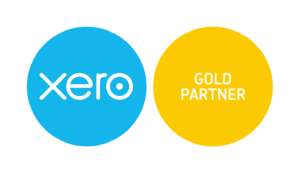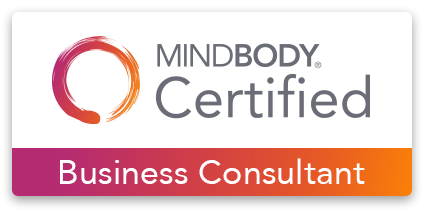This edition of the Numberwise Book Club is featuring Profit First: Transform Your Business from a Cash-Eating Monster to a Money-Making Machine, by Mike Michalowicz. Our marketing manager, Rachel, discusses her book choice below.
I chose this book because of the bold directive in the title – it piqued my curiosity. How exactly can a business go from a cash-eating monster to a truly profitable business?

Business Failure
According to the Bureau of Labor Statistics, about 20% of small businesses fail during the first 2 years of being open, and about 45% fail during the first 5 years.
But here’s the thing about those businesses who don’t “fail” during those early years. Many are racking up debt or barely breaking even. When a business continues to operate but can’t even afford to pay its owner a salary, is it really a “success”?
Business Owner Denial
The Profit First author, Michalowicz, discusses how many entrepreneurs are afraid to tell the truth about their business.
When Michalowicz was a young entrepreneur, he would go to networking meetings and ask other business owners how things were going. Everyone he spoke to would have great things to report – ‘oh business is going great!’ and ‘we’re growing so fast’ and ‘exciting things are happening.’
He would leave these events feeling like a total failure because it seemed like he was the only one struggling to earn a profit.
It wasn’t until he went out for drinks with a few new entrepreneur friends that he found out how full of bologna they were. With a few drinks in them, they admitted that their businesses were struggling and their hard work didn’t seem to be paying off.
“Putting your nose to the grindstone is a really easy way to cover up an unhealthy business. We think if we can just work harder, longer, better – if we can just hold out – something good will happen one day. Something big is just around the corner, right? Something just like magic will wipe away all of that debt, financial stress, and worry.”
Michalowicz realized that how he had been running his business simply wasn’t working. His focus on business growth and increasing top line revenue were not producing the profit he was hoping for. Sure, growing his company and hiring new employees felt great for his ego. But with little to no profit, it felt like he was one bad month away from losing it all – no matter how many hours he worked.
Traditional Business Focus
For decades, the common focus for business owners has been on business growth, revenue, and/or EBITDA. The profit usually comes last in the traditional business formula – it’s whatever money is left at the end of the day.
The traditional formula looks like this: Revenue – Expenses = Profit
The Profit First system turns this around: Revenue – Profit = Expenses
The Profit First Method
The Profit First system insists that you prioritize profit – even when your business isn’t making any. So let’s get to the core of the Profit First method.
The Profit First system requires setting up 5 bank accounts for a business to receive and then distribute money. The separate accounts, Michalowicz insists, are necessary to make it clear what money is accounted for, and ensure there is in fact profit and owner’s compensation always factored in.
Michalowicz also advocates for making some of the accounts – like the one designated for taxes – difficult to access. While your rational brain may understand that regularly setting aside money for tax payments is the best route, having a checkbook or debit card in your pocket that’s linked to that money can quickly override your best intentions.
“Profit first works because it doesn’t try to fix you… profit first is a system designed to work with who you are already. You don’t need to be fixed – the system does.”
The 5 Bank Accounts
Account 1: Income/Revenue
The revenue account is where all income is deposited for products sold or services rendered. 100% of income goes into this account and from there, you allocate it into the other accounts at certain intervals.
Account 2: Profit
It should be no surprise that you should move money into the profit account first. Even if your business is in debt, it’s crucial to begin funding this, no matter if it’s with the bare minimum of 1% of your revenue. Profit is the reward you get for owning your business.
Each quarter (every 90 days), take 50% of the funds from the profit account as profit distribution. This is compensation for the owner and not to be used to reinvest in the company or pay down debt. Michalowicz urges owners to reward themselves with part of this money.
If the profit account only has $200 in it at the end of a quarter and your distribution is $100 – go out to dinner and toast to actually making a profit! Heck, even if there’s only $20 and your profit distribution is $10, get yourself a bottle of wine or a fancy chocolate bar and pat yourself on the back. You’re covering all of your expenses, taking a salary, and still have a little leftover at the end. You’ve done good. And you’re on the right track.
Account 3: Owner’s Compensation
Owner’s compensation is the money you make for working in your business. The recommendation is to make the owner’s comp a % of revenue, rather than a fixed amount. Once again, the author says owner’s pay is absolutely essential to keep business owners motivated.
It can be hard to take a paycheck when you’re facing a lot of debt and/or little revenue. But if there’s no financial reward for your hard work, you’re going to regret and resent your choice to become an entrepreneur sooner or later.
Account 4: Taxes:
Michalowicz recommends actually labeling this account “The government’s money” so that you are never tempted to withdraw from this account unless it is to pay taxes. Once again, this should be the most difficult account to pull money out of. Making this an account at a completely different bank is a good idea.
Account 5: Operating Expenses
The operating expense account a.k.a. “OPEX” will include all expenses that go into running your business and providing goods or services, including payroll. As businesses get used to the Profit First system, some will add an additional account to separate payroll from other OPEX and have a clearer picture of each as they relate to the overall income.
OPEX is one area where goal setting, creativity, and innovation can reap huge benefits for your business. The author offers various tips for lowering OPEX. One of my favorite quotes he shares is that you can be “frugal” in choosing where and how to spend money for your business without being “cheap.”
Target Allocation Percentage (TAP)
If you’re interested in taking the plunge with the Profit First system, Michalowicz shares the range of Target Allocation Percentages (TAPs) he recommends for each account as starting points, as well as how often to move money, and other specific advice in the book.
The Criticism of Traditional Accounting
Several times throughout the book, the author criticizes traditional business accounting methods as not intuitive, potentially misleading, and even backwards.
Michalowicz shares an example of a meeting with his accountant who congratulated him as his business turned a profit for that year. Michalowicz asked, with confusion and embarrassment, where the profit was. The accountant pointing to the net income on the balance sheet didn’t answer his question.
Where was the actual profit? His accountant then clarified that he was referring to an “accounting profit” and the money had likely already been spent on the business.
Michalowicz emphasizes that in traditional accounting, profit is what is (hopefully) leftover after all of the bills have been paid. He believes that if profit is not the top priority from an accounting perspective, it’s much more difficult to meet financial goals.
The Challenges of Profit First
There are potential challenges to the Profit First method Michalowicz urges businesses to employ.
A conversation with the Numberwise founder revealed that, while the principle behind the system is completely valid and a focus on profit is vital for any business to succeed, the actual system Michalowicz lays out could be challenging for two reasons.
- Moving money between five (or more) bank accounts on a regular basis seems like a hassle.
- The reality of paying yourself first, especially in a young business, may not always be feasible. What if you have a fixed expense due, such as your internet, but the money in your OPEX account doesn’t cover it?
That being said, I felt a strong pull toward this book, and that it’s important to share both the principle behind it and the actual method Michalowicz advises.
If reading this edition of the book club gets just one business owner to shift their focus in their business away from “growth” and toward their true profit, then it’s worth it. If you want to employ the actual Profit First method, I recommend reading (or listening to) Profit First.
Eradicating Entrepreneurial Poverty
Michalowicz boldly states that he wants to eradicate entrepreneurial poverty. As in, completely eliminate it. It seems like an impossible goal. Then again, the Dalai Lama once said that if every 8 year old in the world is taught meditation, we will eliminate violence from the world within one generation. And here I am teaching my kids meditation.
Michalowicz shares stories of businesses that have implemented this system and are devoted to the method. There are even “Profit First Professionals” available – accountants and business coaches that are certified in the system, use it themselves, and help businesses implement and refine it to suit their specific needs.
Final Thoughts on Profit First
So, is Numberwise a “Profit First” business? No, we do not use the Profit First method or handle bookkeeping for businesses who follow the method. But in principle, we agree with Michalowicz. Profit is absolutely essential to focus on. And I personally like the idea of the system.
Profit should be at the forefront of planning and operating your business. When you set your prices, make staffing decisions, and decide how to spend your time, consider how it impacts profit.
If you’re not making a profit, isn’t your business really just a hobby? And worse yet, it’s probably an exhausting, stressful, overwhelming hobby that is sucking the joy out of your life. You owe it to yourself and those around you to make positive improvements. Profit First could be just the thing.
Have you read the book or tried the Profit First system? We’d love to hear your thoughts in the comments.
More from Numberwise:
Book Club: You are a Badass at Making Money








